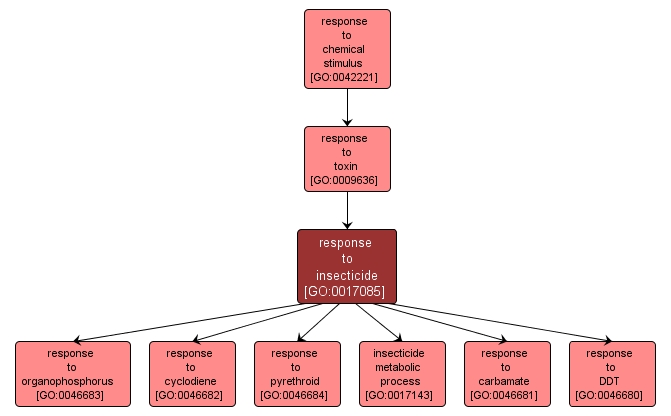GO TERM SUMMARY
|
| Name: |
response to insecticide |
| Acc: |
GO:0017085 |
| Aspect: |
Biological Process |
| Desc: |
A change in state or activity of a cell or an organism (in terms of movement, secretion, enzyme production, gene expression, etc.) as a result of an insecticide stimulus. Insecticides are chemicals used to kill insects. |
Synonyms:
- insecticide resistance
- insecticide susceptibility/resistance
|
|

|
INTERACTIVE GO GRAPH
|














